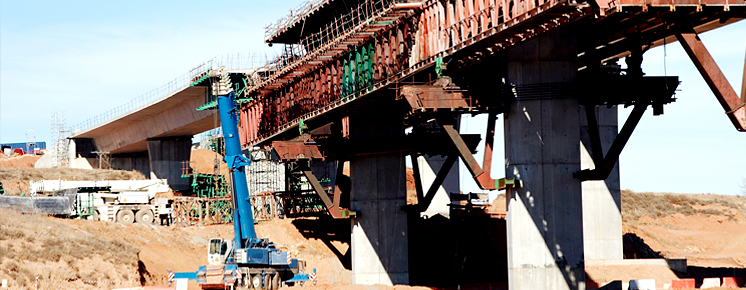
Comprehensive guidance to select and design durable bridge systems and components that are both easier to inspect and better-suited to their environments.
Service Life Design for Bridges (R19A)
Challenge
Because of deterioration, individual bridge components and systems such as bearings, decks, joints, columns, and girders require frequent and costly inspections, maintenance, and repairs that are often difficult to conduct. These activities cause lane closures that create congestion and impact safety for road workers and motorists. Bridge engineers need improved design options so they can deliver bridges that are operational for 100 years or more.
Solution
The Service Life Design Guide for Bridges is a comprehensive reference document that complements AASHTO specifications and equips bridge engineers with the tools to develop specific solutions for given conditions and constraints. It represents a new approach to designing for service life that results in longer-lasting bridge components and systems that are both easier to inspect and better suited to their environments. The guide focuses on typical bridges with one or multiple spans and a maximum single span length of 300 feet. It addresses design, fabrication, construction, operation, maintenance, repair, and replacement issues applicable to both new and existing bridges. It includes standard plans, model specifications for design and construction, and fault tree flow charts.
Benefits
The Service Life Design Guide for Bridges may be utilized to provide longer service life by design through durable and state-of-the-art materials, construction techniques, and utilization of emerging technologies that are ideally suited for the bridge. The guide addresses service life issues at the design stage; which is significantly less costly than taking maintenance and preservation actions while the bridge is in service. It also provides engineers with tools to select and design for longer-lasting bridge systems and subsystems for the appropriate environment.
-

Save Lives
Limits the need for lane closures and work zone restrictions, which greatly reduces safety concerns.
-

Save Money
Maximizes the service life of bridges, resulting in lower future costs and lower life-cycle cost.
-

Save Time
Minimizes the need for bridge rehabilitation and maintenance, resulting in fewer traffic delays.


